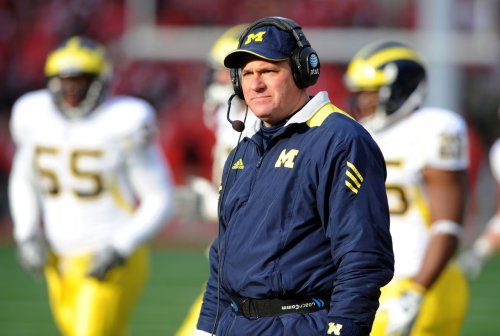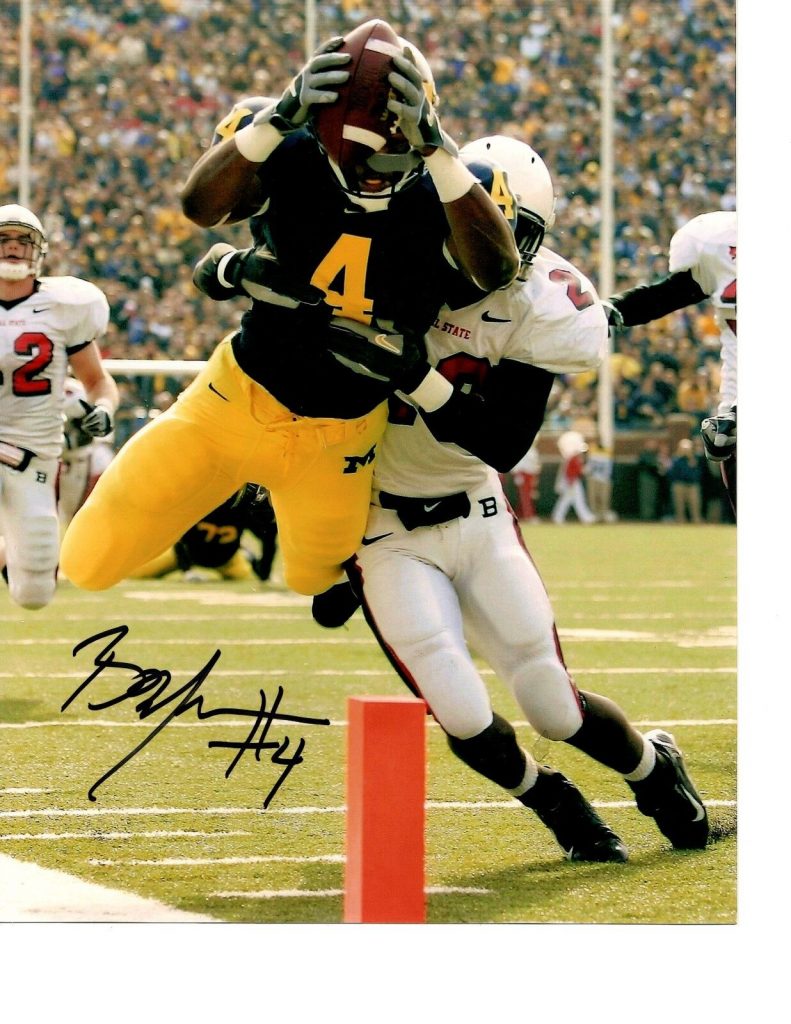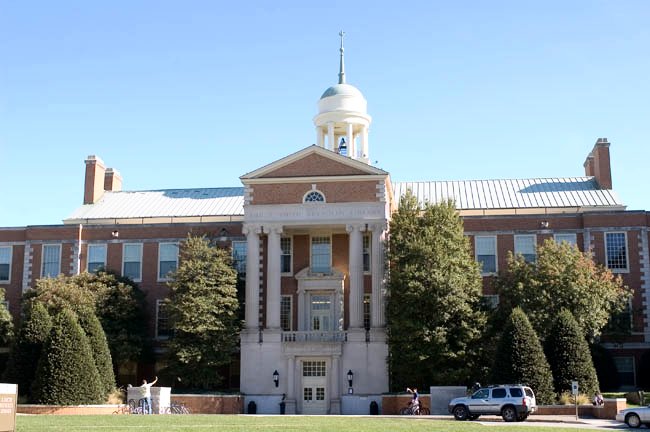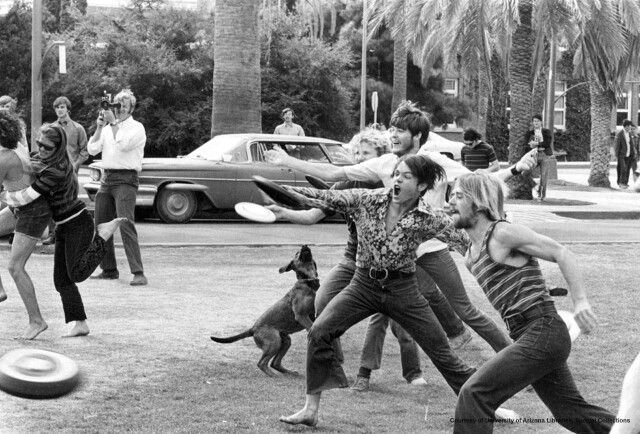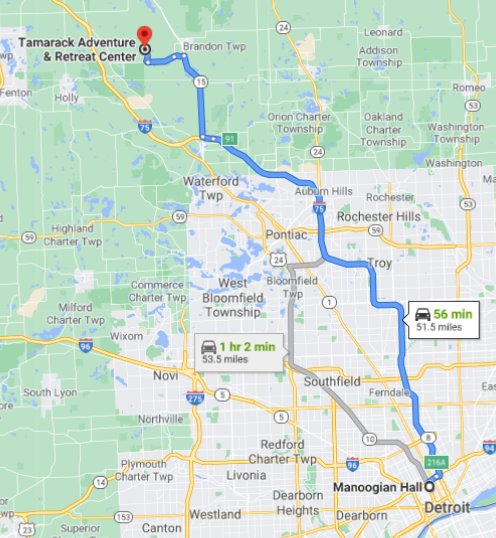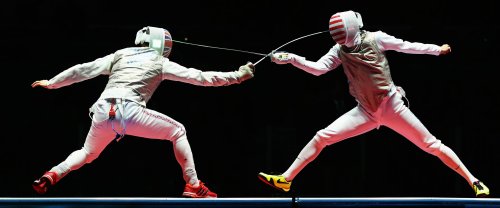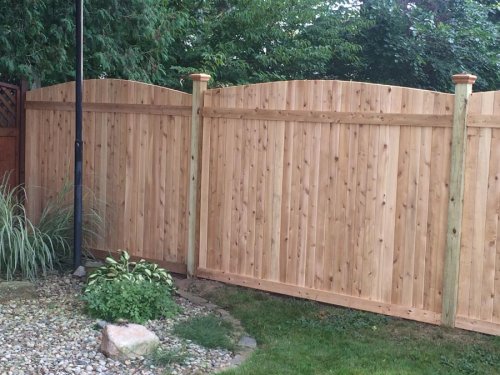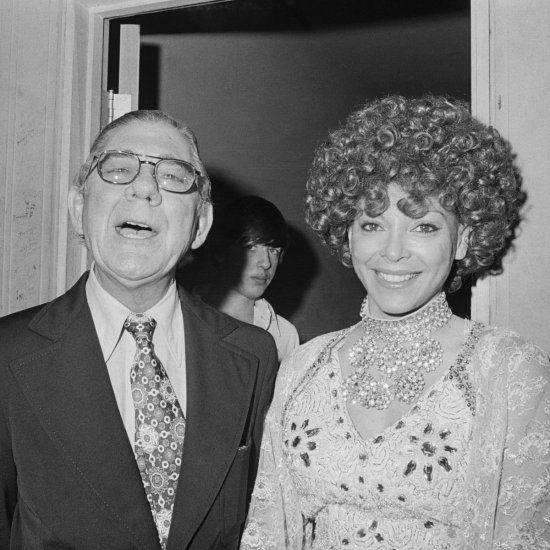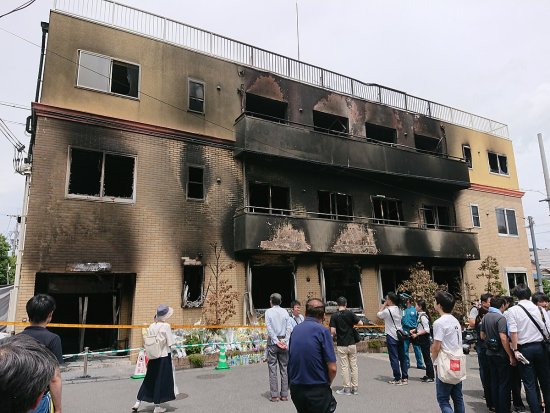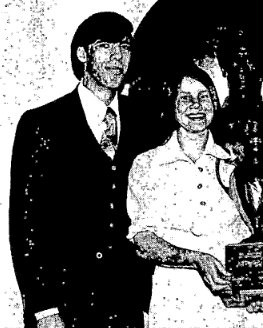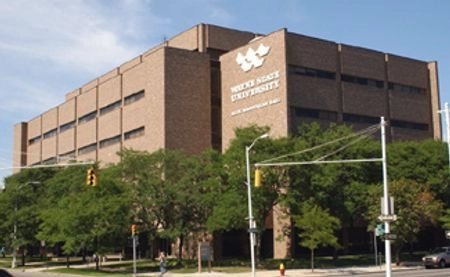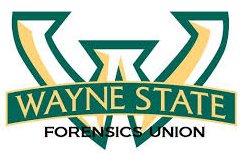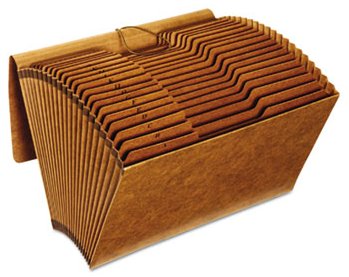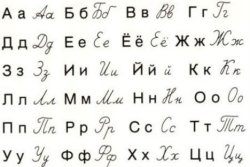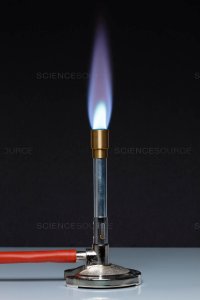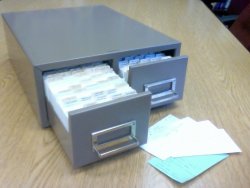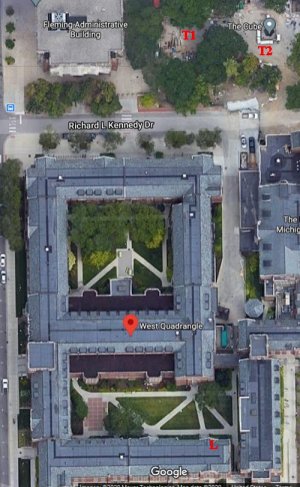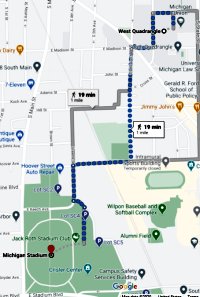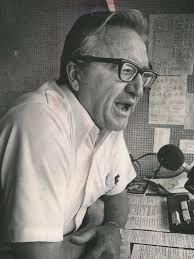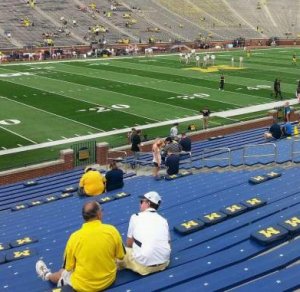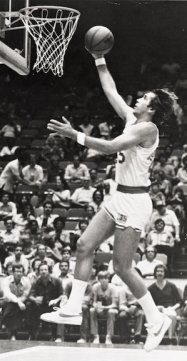Driving through Canada to the Wolverine state. Continue reading
In 1975-76, my last year of coaching at U-M, the debate team was in shambles. I described the situation here. During the three years that I spent at Wayne State in downtown Detroit I heard virtually nothing about the U-M team. I do not recall hearing that they attended any tournaments. I figured that the team had been abolished or reduced to obscurity.
I discovered at some point in the 2007-2008 school year that, unbeknownst to me, they program had at some point risen from the ashes and was competing strongly at the national level. I don’t remember how I learned about this, but as soon as I did, I composed and sent an email to Josh Hoe1, the director of the debate program. In it I described my lackluster career as a debater and my much more successful efforts at coaching. I also described the hardships that the U-M debaters and coaches had to overcome when it was funded by the speech department.
Josh really appreciated my email a lot. He forwarded it to all of the alumni of the debate program. This precipitated an outburst of “reply all” responses from old-timers. Josh needed to ask them to take their communications off-line. It was great for me. I was able to find out what had become of most of my charges.
At some point over the summer Josh and his assistant Aaron Kall2 decided to host a mostly informal gathering for debate alums on the weekend of U-M’s first home game against Miami U. (OH) on September 7, 2008. As it happened it was also the debut in Michigan Stadium of newly hired coach Rich Rodriguez. The team had lost its opener, 25-23 to Utah.
By 2008 I was no long working as constantly as I had in the nineties. My wife Sue and I also had amassed enough money at this point to pay for trips. As soon as I heard of the debate/football event, I made arrangements with Josh for us to attend. We decided to make a mini-vacation of it and to drive across Michigan to visit Sue’s aunt and uncle, Bob and Carol Locke3, and their daughters, Deb, Wendy, and Sandy. They all lived in the Grand Rapids area. Our destination was Bob and Carol’s home in Hudsonville.
Sue was really looking forward to that part of the trip. Sue liked everyone in that part of her family a lot. I suspected that part of the attraction was that Bob was the only member of his family to move away from Enfield. His three brothers and his sister (Sue’s mother Effy) all lived within a couple of miles of one another.
Documentation: I don’t think that I took any notes on this trips. I had a small Canon point-and-shoot camera in those days. If I brought it, I either did not take any photos, or I lost them. I think that for some reason I left it home.
I found a folder on my computer about this trip, but its contents were of no help. Inside it are two identical html files that contain MapQuest directions from 1275 Huron St. in Ypsilanti to our house in Enfield. That address in Ypsi in 2023 was associated with the Marriott Eagle Crest resort and hotel. I have absolutely no memory of staying there. Aside from that it only contains an image of the Hampton Inn logo and a small map of the area around the Hampton Inn in Ann Arbor.
When I first asked Sue about the trip, she had no recollection at all. She could not even remember being in Michigan Stadium. Later, after a little prompting, she recalled a few details that I have included.
In short, I am relying almost exclusively on my memory for the account below.
Enfield to Ann Arbor: The town of Ann Arbor had a population of only about 112,000 in 2023. However, on football Saturdays almost that many people would be crammed into Michigan Stadium. Lodging would be in high demand. My first order of business was to find a place for us to stay for Friday and Saturday night. I booked us rooms at the Hampton Inn that was just south of the U-M golf course. I probably used the points from my credit card to pay for at least part of the bill.
I think that we must have left on Thursday morning. We took the Canadian route through Ontario, and I remember that I was very upset that there was a long delay when we entered near Buffalo. When we got to the front, the border guy asked me what my license plate was. I knew that it was three digits followed by FAU, but I was not sure of the number. I guessed, and he said that that was close enough.
The 10+ hour drive time that Google Maps sited, and I am pretty sure that we did not leave at the crack of dawn, and we stopped for food twice. We might have stopped in Plymouth to check out the house on Sheldon Rd., too. Also, I have a vague recollection that we crossed over north of Lake St. Clair to avoid rush hour traffic in Detroit. The Ambassador Bridge was closed for construction. The lines at the tunnel must have been outrageous.
In any case, I think that we arrived at the Hampton Inn after dark on Thursday, September 5. We probably ate the free breakfast at the hotel the next morning.
I remember that we spent most of a day walking around the U-M campus and assessing how much had changed in the twenty-eight years since we had last been there. That must have been on Friday. I remember that Allen Rumsey House did not appear to have changed much at all. I am pretty sure that I ducked into the Intramural Building to assure myself that the overall championship won by A-R in 1969-70 was still recognized on the banner.
I also remember showing to Sue the spot behind the administration building where the water balloons launched from the fourth floor of A-R landed. I am pretty sure that we ate lunch at a restaurant on S. University near the engineering buildings.
We also had an appointment with Linda (Calo) Martini, who was working, I think, at the Michigan Debate Institute or maybe the Michigan Intercollegiate Speech League. We were hoping to see Kent (introduced here) as well, but he was not present. Linda said that he had taken it very hard when his mother died. It all seemed a little mysterious.
We were supposed to meet Josh and some other debate alums at a bar in Ann Arbor on Friday evening. Several of those in attendance wore Michigan Debate tee shirts that closely resembled the one that I once had. However, none of theirs had the letter C (for captain) on the front and “Prof. Wavada” on the back. My tee shirt had not survived the decades since the debaters gave it to me in 1970.
I am pretty sure that Bill Colburn, who had been Director of Forensics back in the sixties and seventies was there, too. I could hardly recognize him.
I learned that the debate team had been divorced from the speech department, which had at some point been combined with the journalism department. Somehow the debate team had taken control over the summer institute and turned a locally successful gathering run mostly by Wayne State people into the #1 such event in the entire nation. The benefits to the U-M debate program were enormous. It generated a lot of cash for the team. It provided summer employment and recognition for the coaching staff. Most importantly, top-flight high school debaters flocked to the institute every summer, and some inevitably fell in love with Ann Arbor and the U-M campus, enrolled, and joined the team.
The program also received funding from the University and had begun to receive significant contributions from its growing alumni base, most of whom were lawyers. I was astounded to learn that one of the recently graduated debaters, Dylan Keenan, had attended one of the Shawnee Mission schools and had majored in math4.
On Saturday we ate breakfast at the Hampton Inn and then drove to the game. Parking was always scarce, but we found a spot that was not too far from the stadium. We somehow eventually found the area where the debaters tail-gated. I think that we met up with Wayne Miller there. He was with some of his friends from the seventies.
Another short walk brought us to the stadium. Almost everyone wore blue and/or maize, but someone in the large group of fans crossing the street was wearing a red hat with a white M on it. The guy directing traffic called to him and said, “Well, you got the letter right, but whoever sold you that hat must have been color-blind.” Sue told me that someone also gave her a hard time because she was carrying a red handbag.

There are no bad seats in Michigan Stadium, but almost everyone had a better view of the action than we did. We were near the top in one of the corners of the end zone. It was more comfortable than being crammed together in the student section. It was also much more pleasant than UConn games because no liquor was allowed in the stadium.
The game, however, was painful to watch. U-M started well. The score was 10-0 at the end of the first quarter, and people in the stands were happy for a time with the team’s new approach to offense. However, after that the winningest team in college football stalled. By the fourth quarter it was 10-6. Brandon Minor scored a late touchdown to make the score a little more acceptable. Michigan had never lost to any team from the Mid-American Conference. For a while it appeared that we might be watching something historic.
Afterwards we drove with Wayne to Krazy Jim’s Blimpy Burgers. Wayne was surprised that I knew about it. I informed him that I had gone there more than once a month for the four years that I lived at A-R.
Inside a blowhard who was a little ahead of us in line started telling stories about how he had worked with the legendary Krazy Ray. Everyone was impressed when I said that I came here all the time when Krazy Ray ran the grill, and I sure didn’t remember this guy. I then explained how upset Ray would get if someone tried to order the whole meal from him. He strictly grilled and assembled the burgers. You were expected to give the rest of your order to the next person behind the counter.
The burgers were still very tasty, and the atmosphere was magical. I had a great time.
Ann Arbor to Hudsonville: One other very important event occurred in Ann Arbor, but the details are shrouded. Sue somehow arranged for a new custom-designed tee shirt for me that was nearly identical to the one that the guys had gotten me in 1976. I remember that she ordered me to stop at a location on the outskirts of town (I think) on the way to Hudsonville. She went inside for a while and returned with a bag that she presented to me. I can’t say that I was surprised—Sue is notoriously bad at keeping secrets—but it was a very nice gesture.5
I don’t remember anything about the drive to Hudsonville. We probably arrived there at about lunch time. I think that we only stayed one night and that Bob and Carol put us up for the night in a cottage that was on their property.
Their home was in a secluded area surrounded by woods and wildlife. I remember that there was a pond nearby and that Carol was interested in birds, especially cardinals.
We saw at least some of the daughters, their husbands, and their children. Sue reportedly brought a game with her that she had used in her work with the Enfield after-school program. It was involved with traveling from state to state. I vaguely remember it. She said that she left it with them.
Hudsonville to Enfield: Our route home was quite different fromour route to Hudsonville. We took I-96 and I-69 across Michigan and crossed to Canada at Sarnia. We then took 402 and 403 across Ontario. I remember nothing about this journey.
1. In 2010 Josh was convicted of soliciting a minor for sex and went to prison for a few years. The article in the Ann Arbor News about the incident is posted here. In 2023 his LinkedIn page (posted here) listed his jobs as Criminal Justice Policy Manager at Dream.Org and host of the Decarceration Nation podcast.
2. Aaron took over the program after Josh was fired. In 2023 he was still the coach of perhaps the most successful program in the country. However first place at the National Debate Tournament has still evaded the Wolverines.
3. Carol died in 2018. Her obituary has been posted here. Bob outlived all of his siblings. He died in 2022. His obituary is posted here.
4. That last part may not be right. Dylan, whose LinkedIn page is posted here, evidently majored in economics. Dylan and his partner, Adam Farra, had made it to the semifinals of the NDT in 2008.
5. I still have the tee shirt in 2023.


